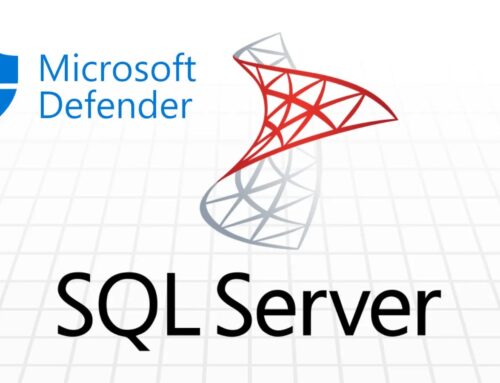
APT SideWinder Actor Profile – Recent Attacks, Tactics, Techniques, and Procedures
Unmasking SideWinder: A Deep Dive into a Persistent Threat Group
In the high-stakes arena of cybersecurity, understanding advanced persistent threat (APT) groups is paramount. These state-sponsored or state-aligned entities operate with sophisticated tactics, often targeting critical infrastructure, government agencies, and strategic businesses to achieve geopolitical or economic objectives. Among them, APT SideWinder stands out as a formidable and evolving threat. Known by various monikers such as Rattlesnake, Razor Tiger, and T-APT-04, this group has demonstrated a consistent operational presence for over a decade, adapting its methods to bypass defenses and achieve its aims. This deep dive will explore SideWinder’s origins, recent activities, and the tactics, techniques, and procedures (TTPs) that define its insidious operations.
Origins and Evolution of APT SideWinder
APT SideWinder has been active since at least 2012, with strong indicators pointing to an origin in India. Initially, its primary focus was on entities within South Asia, specifically targeting military, government, and strategic business sectors. This regional emphasis highlights a clear intent to gather intelligence and disrupt operations pertinent to its perceived national interests. Over time, however, SideWinder’s reach has expanded significantly. Recent intelligence indicates a alarming shift in its operational footprint, now including critical infrastructure in the Middle East. This expansion signifies an increasing ambition and a broader threat landscape that organizations globally must acknowledge.
Targeting Profile and Recent Campaigns
SideWinder’s targeting profile confirms its status as a nation-state actor engaged in cyber espionage and potentially sabotage. Their preferred targets underscore a desire to acquire sensitive information and exert influence at a government or strategic level:
- Military Organizations: Espionage campaigns aimed at acquiring defense secrets, troop movements, and strategic plans.
- Government Agencies: Infiltrating administrative networks for political intelligence gathering, diplomatic leverage, and exfiltration of sensitive data.
- Strategic Business Entities: Targeting companies involved in critical sectors, potentially for economic espionage or to gain access to broader supply chains.
- Critical Infrastructure (New Expansion): The recent pivot to critical infrastructure in the Middle East is particularly concerning. This could include energy grids, telecommunications, or transportation networks, posing a significant risk of disruption or data exfiltration that could have widespread societal impact.
While specific CVEs linked directly to SideWinder’s latest campaigns are often closely guarded intelligence, their methodologies frequently leverage known vulnerabilities and sophisticated social engineering. Organizations should prioritize patching critical vulnerabilities, especially those that enable initial access or privilege escalation. For example, ensuring timely patches for remote code execution (RCE) vulnerabilities or those affecting common enterprise software is crucial. While we currently lack public CVEs explicitly tied to SideWinder’s most recent undisclosed campaigns, staying abreast of high-severity CVEs like those commonly used for initial access, such as CVE-2023-38831 (WinRAR vulnerability, though not exclusively SideWinder, demonstrates a common attack vector) or unpatched flaws in public-facing applications, remains critical to defenses.
Tactics, Techniques, and Procedures (TTPs)
SideWinder employs a diverse array of TTPs, reflecting its advanced capabilities and persistence. Their approach often involves a multi-stage attack chain designed for stealth, persistence, and data exfiltration:
- Initial Access:
- Spear-phishing: Highly customized and convincing emails laden with malicious attachments (e.g., weaponized documents) or links to credential harvesting sites.
- Exploitation of Public-Facing Applications: Leveraging vulnerabilities in web servers, VPNs, or other internet-accessible services to gain an initial foothold.
- Execution and Persistence:
- Custom Malware: Development and deployment of bespoke malware strains, often specifically designed to evade detection by common antivirus solutions. These can range from sophisticated backdoors to information stealers.
- Legitimate Tools Abuse (Living off the Land): Utilizing legitimate system tools (e.g., PowerShell, WMI, PsExec) to perform malicious activities, making it harder for defenders to distinguish between legitimate and malicious actions.
- Scheduled Tasks and Registry Modifications: Establishing persistence mechanisms to ensure continued access to compromised systems even after reboots.
- Defense Evasion:
- Obfuscation and Encryption: Encrypting command-and-control (C2) communications and obfuscating malware code to bypass network and endpoint security controls.
- Anti-analysis Techniques: Implementing checks to detect virtualized environments or sandboxes, preventing analysis of their malicious payloads.
- Command and Control (C2):
- Diverse C2 Channels: Using a variety of communication channels, including HTTP/HTTPS, DNS, and sometimes custom protocols, to maintain covert communication with compromised systems.
- Compromised Infrastructure: Often leveraging legitimate but compromised websites or cloud services as C2 infrastructure to blend in with normal network traffic.
- Exfiltration:
- Staged Exfiltration: Collecting and compressing data within the compromised network before exfiltrating it in smaller, less conspicuous chunks to avoid detection.
- Encrypted Channels: Sending exfiltrated data over encrypted channels to prevent interception and analysis.
Remediation and Mitigation Actions
Defending against a sophisticated actor like SideWinder requires a multi-layered and proactive cybersecurity strategy. Organizations in target sectors must implement robust controls and foster a strong security posture:
- Patch Management: Implement a rigorous patch management program, prioritizing critical patches for operating systems, applications, and network devices. Automate where possible to reduce exposure windows.
- Endpoint Detection and Response (EDR): Deploy EDR solutions to gain deep visibility into endpoint activity, detect anomalous behavior, and respond rapidly to threats.
- Network Segmentation: Segment networks to limit lateral movement if a compromise occurs. Implement zero-trust principles, verifying all users and devices before granting access to resources.
- Email Security: Fortify email security gateways with advanced threat protection, sandboxing, and DMARC/SPF/DKIM implementation to combat spear-phishing attempts.
- Security Awareness Training: Regularly train employees on phishing recognition, safe browsing habits, and reporting suspicious activities. Phishing remains a primary initial access vector.
- Threat Intelligence: Subscribe to and integrate high-quality threat intelligence feeds that include indicators of compromise (IoCs) and TTPs from groups like SideWinder.
- Behavioral Analytics: Utilize security information and event management (SIEM) systems with behavioral analytics capabilities to detect subtle anomalies indicative of “living off the land” attacks or C2 communications.
- Regular Audits and Penetration Testing: Conduct frequent security audits and penetration tests to identify vulnerabilities and weaknesses in your security defenses before adversaries can exploit them.
Tools for Detection and Mitigation
A comprehensive cybersecurity toolkit is essential for defending against sophisticated APTs. Here are some categories of tools vital for detection, scanning, and mitigation:
| Tool Category | Purpose | Examples / Relevant Technologies |
|---|---|---|
| Endpoint Protection Platforms (EPP) / EDR | Prevent, detect, and respond to threats at the endpoint level; provide deep visibility into endpoint activities. | CrowdStrike Falcon, Microsoft Defender for Endpoint, SentinelOne |
| Email Security Gateways | Filter malicious emails, detect phishing attempts, and block malware delivery. | Proofpoint, Mimecast, Microsoft 365 Defender (Email) |
| Network Detection and Response (NDR) | Monitor network traffic for suspicious patterns, C2 communications, and lateral movement. | Vectra AI, Darktrace, Zeek (Bro) |
| Vulnerability Management Solutions | Discover and prioritize vulnerabilities across the IT environment for timely patching. | Tenable Nessus, Qualys, Rapid7 InsightVM |
| SIEM / SOAR Platforms | Aggregate security logs, provide threat detection, and automate incident response workflows. | Splunk, IBM QRadar, Microsoft Azure Sentinel |
| Threat Intelligence Platforms (TIP) | Collect, process, and disseminate threat intelligence, including IoCs and TTPs. | Recorded Future, Anomali, MISP (Open Source) |
Conclusion
APT SideWinder represents a persistent and evolving threat, particularly for government, military, and critical infrastructure sectors. Its ability to adapt TTPs, expand its targeting scope, and leverage sophisticated malware underscores the continuous need for vigilance and robust cybersecurity defenses. By understanding SideWinder’s origins, typical targets, and operational methodologies, organizations can better prepare, detect, and respond to potential intrusions. Proactive threat intelligence, rigorous patch management, advanced endpoint and network security, and continuous security awareness training are not merely best practices but essential fortifications in the ongoing battle against advanced persistent threats like SideWinder.





